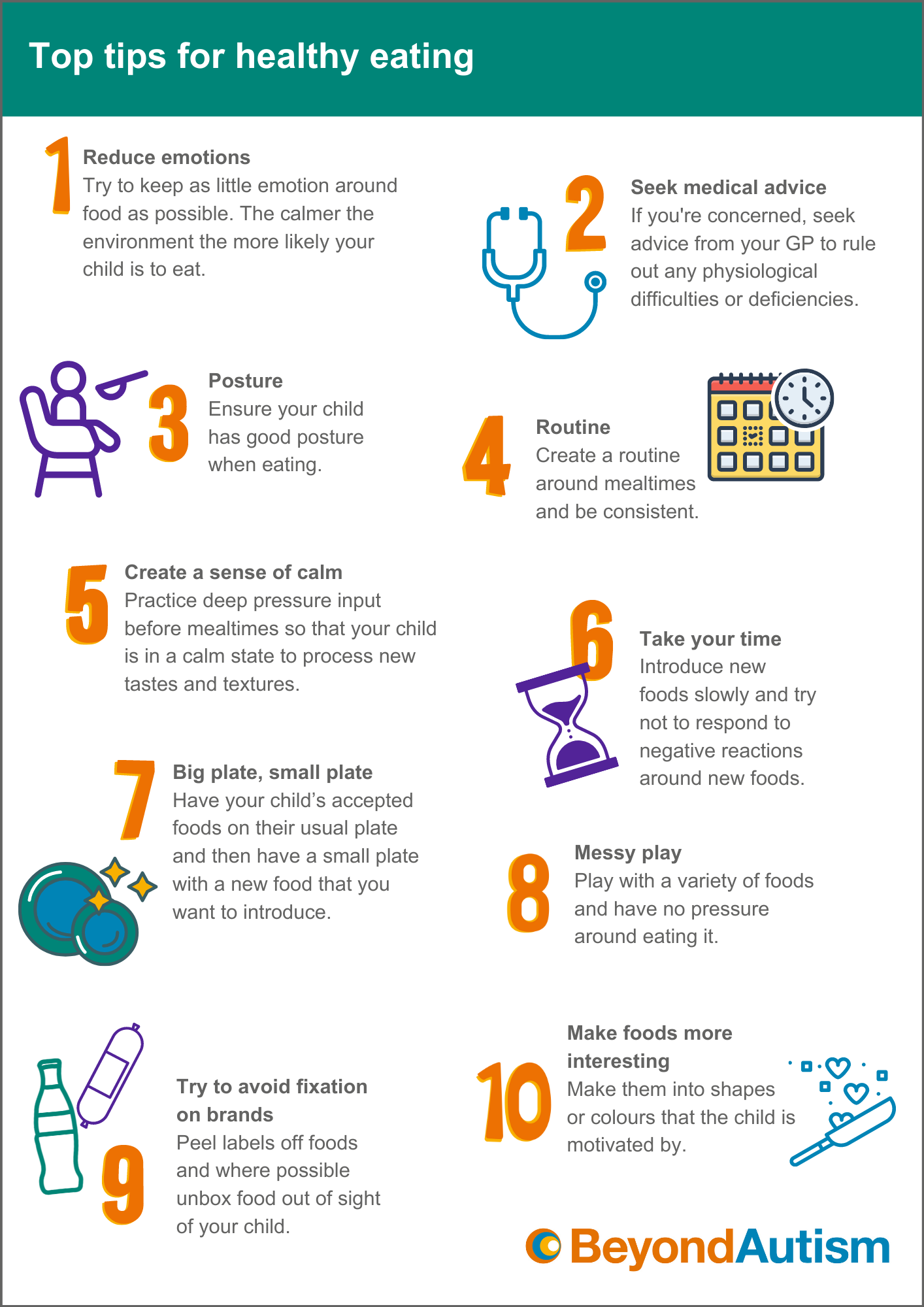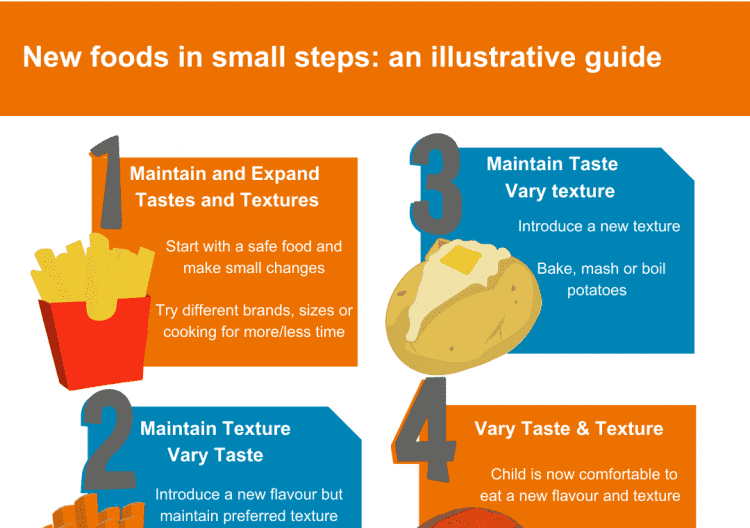Empowering People, Launching lives
It is important to note that advice from a doctor and/or dietician should be sought where necessary to rule out any physiological difficulties or deficiencies.
Download our handy top tips poster below!


Lots of children go through periods of picky eating. For many, this phase will pass as the child gradually learns to acc...

Selective or restrictive eating is the most common eating challenge faced by autistic children and their families. Meal...